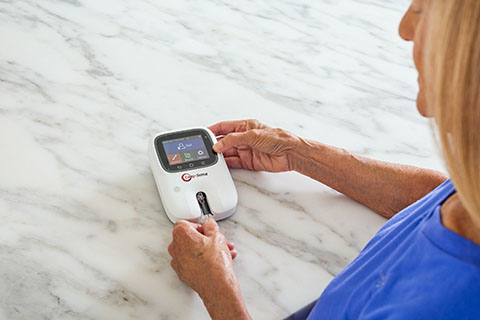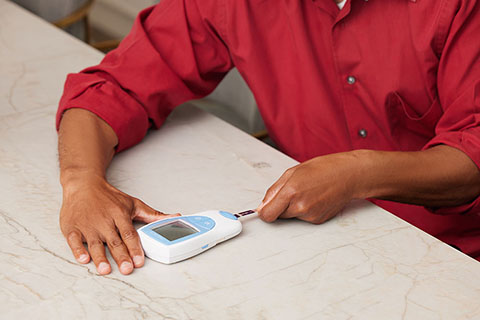Cardiac health is among the leading medical concerns in the United States. With millions of Americans at risk of severe heart disease, many take anticoagulants such as warfarin to manage their condition.
What is PT/INR testing?
A prothrombin time (PT) test measures how long it takes for a clot to form in your blood sample, and INR (international normalized ratio) is the data gained from the test results. It is common for some people to get their PT/INR levels checked at their practitioner's office or clinic every four to six weeks, but research shows more frequent testing can help prevent serious health problems. Reducing the time between tests can ensure your INR levels are healthy on a more regular basis without the need to go into a medical facility.
Checking your PT/INR levels may sound complicated, but the process is easy and user-friendly, thanks to modern self-testing kits. Home INR monitoring is a straightforward and reliable way to keep tabs on your cardiac health and does not require any medical experience or technical skills.
How do INR devices work?
INR tests are simple, low-risk procedures. An INR device uses a small needle to puncture your fingertip, which can cause minor pain or bruising. A drop of blood is collected and placed onto a test strip inserted into the device to calculate the results within a few minutes. After you measure your PT/INR levels at home, it is important to share and review the results with your practitioner. Talk to your caregiver about the best way to share the test results with them.
Why check INR?
If you are at risk for heart disease, self-INR testing is a quick and easy way to monitor the risk factors that can cause a heart attack or other conditions. Other reasons for an INR test include:
- It offers real-time health data. Checking your INR helps to ensure your anticoagulation medication is working correctly. The test also checks for liver problems, unusual bleeding, and abnormal blood clots. By reporting the results directly to your practitioner, they can quickly make medication adjustments to help prevent health complications.
- It is Medicare-approved. Since 2008, Medicare has approved PT/INR self-testing for patients taking warfarin and who have mechanical heart valves, chronic atrial fibrillation, or venous thrombosis, which includes deep vein thrombosis (DVT) and pulmonary embolism.
- It reduces medical complications. Research shows that consistent weekly self-testing results in fewer medical complications, health risks, and visits to the emergency room.
- It saves time. Because you can complete a PT/INR test from home, you do not need to spend all that time traveling to and from the practitioner's office, laboratory, or clinic for an appointment. This is particularly valuable to patients who travel a lot and are frequently away from their regular caregiver. PT/INR self-testing can even save the average person as many as four days in personal time each year.
- It fits your schedule. At-home INR testing allows you to determine the place and time that works best for you. You do not need to miss work, school, or other activities to make an appointment with your practitioner or clinic.
- It lets you better control your health. It is common for people who self-test weekly to become more involved in their personal healthcare. Not only will you keep better track of your PT/INR anticoagulation levels, but it can empower you to monitor and treat other areas of your health.
- It provides peace of mind. Keeping regular tabs on your INR levels can reduce the stress associated with taking anticoagulants. Knowing the state of your health makes it easier to go through your day without worrying about the side effects of


